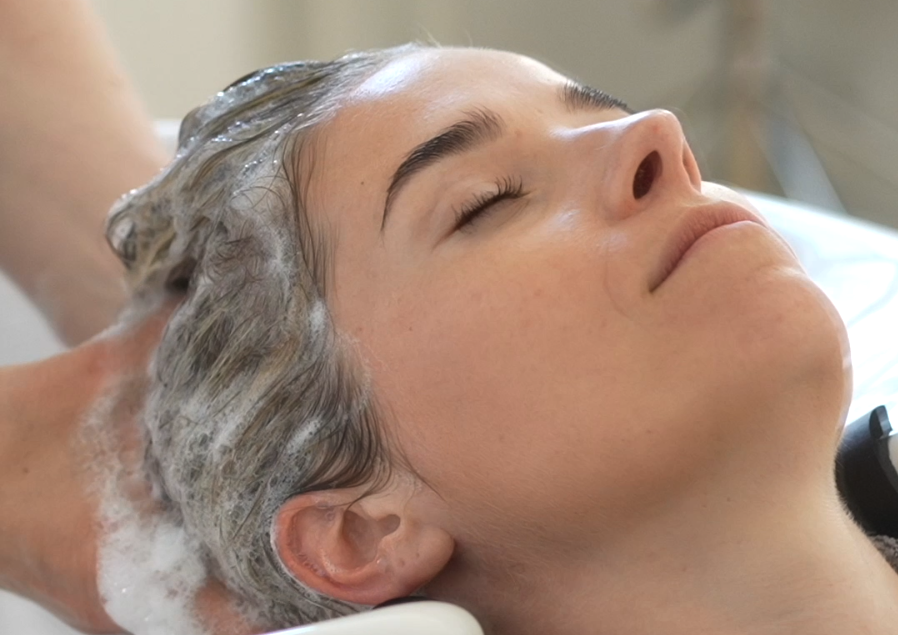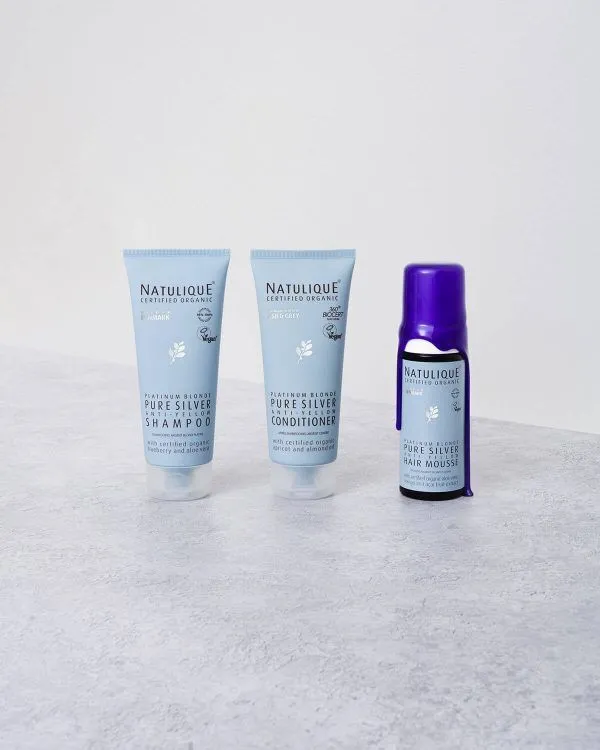Hair coloring is a common practice that allows you to experiment with different shades and styles. However, it can sometimes cause redness on the scalp, which can be uncomfortable and worrying. Understanding how to eliminate redness from hair color is essential to avoid discomfort and fully enjoy your new color. This article explores different strategies and techniques for managing redness.
Identifying Redness and Associated Problems
Understanding how redness appears after coloring
The consequences of misapplication
Incorrect application of hair color is a frequent cause of redness. When the product is not evenly distributed on the scalp, or when it is left on for too long, it can irritate the skin. It's crucial to follow the manufacturer's instructions to the letter and ensure correct application to avoid irritation.
Individual sensitivities and allergies
Allergic reactions are also a major cause of redness after coloring. Some people may be sensitive to specific components in colorants, such as para-phenylenediamine (PPD). These sensitivities can manifest as redness, itching or swelling. It is therefore advisable to be aware of potential allergies before embarking on a new coloring project.
Identify common symptoms of rash
Distinguishing between normal redness and allergic reactions
After coloring, some mild redness may be normal, especially if it's the first time you've used a certain type of product. However, it's important to be able to distinguish these mild rednesses from signs of more serious allergic reactions. Normal redness is usually short-lived and accompanied by mild itching sensations. Allergic reactions, on the other hand, can cause swelling, rashes or even breathing difficulties, and require immediate medical attention.
Preventing redness during coloring
The importance of an allergy test before coloring
How do you perform a proper skin test?
An allergy test is an essential precaution before coloring. To do this, apply a small amount of colorant behind the ear and leave for 48 hours. If no reaction occurs during this period, the product is probably safe to use. This prevents unexpected reactions and protects your scalp.
Choosing the right quality hair colorants
Understand the differences between permanent, semi-permanent and temporary colorations
Choosing the right hair colorants is also crucial. Permanent colorants often contain more aggressive chemical agents, increasing the risk of redness and irritation. Semi-permanent and temporary colorations, on the other hand, are generally less aggressive and may be a better option for those with sensitive scalps. Understanding these differences will help you make an informed choice and minimize the risk of irritation.
Treatments and Solutions to Reduce Redness
Home treatments to soothe redness
Use of natural remedies
There are several natural remedies that can be used to soothe redness caused by hair coloring. For example, aloe vera is widely recognized for its anti-inflammatory and soothing properties. Applying aloe vera gel to irritated areas can help reduce redness and burning sensations. Similarly, coconut oil, thanks to its moisturizing and antibacterial properties, can also be effective in soothing scalp irritations.
Concoction of soothing hair masks
Another effective way to treat redness is to use soothing hair masks, prepared at home. Mixing plain yoghurt with honey and a few drops of lavender essential oil can create a moisturizing, soothing mask. Apply the mask to the scalp and leave it on for 20-30 minutes before rinsing off with lukewarm water. This treatment can help soothe itching and reduce redness following coloring.
Medical solutions for persistent or severe redness
Use of anti-inflammatory or corticosteroid creams
If redness persists despite home treatments, or if it is particularly severe, it may be necessary to turn to medical solutions. Anti-inflammatory creams, such as those containing hydrocortisone, can be effective in reducing inflammation and redness. These creams must be used in accordance with the doctor's or pharmacist's instructions to avoid any adverse effects.
Medical consultation
In some cases, redness may be the sign of a severe allergic reaction requiring medical intervention. If you notice symptoms such as severe swelling, blistering or breathing difficulties, it's crucial to consult a healthcare professional immediately. He or she can prescribe appropriate treatments, such as antihistamines or corticosteroids, to manage the allergic reaction and soothe the rash.
See also: How to bleach hair naturally?
How to avoid redness from hair coloring
Precautions before coloring
Perform a Sensitivity Test
The first step in avoiding redness after coloring is to perform a sensitivity test. Apply a small amount of the intended color to an inconspicuous area of your skin, such as behind the ear or on the inside of the wrist. Leave on for 48 hours and observe for any allergic reaction. If there's no redness, itching or irritation, you can proceed with the rest of your hair in peace.
Choosing the right product
Opt for colorants designed for sensitive scalps. Hypoallergenic or ammonia-free products can reduce the likelihood of irritation. Read labels carefully and avoid products containing common allergens such as para-phenylenediamine (PPD) and hydrogen peroxide in high concentrations.
Care during coloring
Scalp hydration
Before applying color, prepare your scalp with moisturizing and protective products. Specific serums or creams can create a protective barrier that prevents irritants from penetrating the skin. Make sure your scalp is clean and free of sores or irritations before starting the coloring process.
Follow Instructions Meticulously
Follow the instructions supplied with the staining kit. Time the process so as not to exceed the recommended time, which could cause irritation. Use the gloves supplied to avoid direct contact between the color and your skin. Correct, even application can greatly minimize the risk of redness.
After coloring: Treatment and care
Gentle, soothing wash
After coloring, rinse your hair with lukewarm water, then use a gentle shampoo specially formulated for newly-colored hair. Sulfate-free shampoos are particularly recommended, as they cleanse gently without stripping away the scalp's natural protective oils. Avoid using hot water, which can aggravate redness and cause further skin dryness.
Use of Specific Conditioners and Masks
Applying a moisturizing conditioner after rinsing can help restore moisture to your scalp. For deep conditioning, use hair masks rich in soothing ingredients such as aloe, shea butter and jojoba oil. Leave masks on for around 20-30 minutes before rinsing thoroughly for maximum benefit.
Consult a dermatologist
Observing warning signs
If, despite all precautions, you experience persistent redness, swelling, intense itching or rash, it's crucial to consult a dermatologist. These signs may indicate a severe allergic reaction requiring medical intervention. Don't ignore these symptoms, and seek professional help to avoid any complications.
Suitable Medical Treatments
A dermatologist may prescribe creams or ointments containing corticosteroids to reduce inflammation and soothe redness. In some cases, antihistamines may be necessary to control allergic reactions. Your healthcare professional may also be able to advise you on safer coloring alternatives better suited to your skin type.
Precautions and maintenance to avoid redness from coloring
Precautions to take before coloring
Perform a Sensitivity Test
The first step in avoiding redness after coloring is to perform a sensitivity test. Apply a small amount of the intended color to an inconspicuous area of your skin, such as behind the ear or on the inside of the wrist. Leave on for 48 hours and observe for any allergic reaction. If there's no redness, itching or irritation, you can proceed with the rest of your hair in peace.
Choosing the right product
Opt for colorants designed for sensitive scalps. Hypoallergenic or ammonia-free products can reduce the likelihood of irritation. Read labels carefully and avoid products containing common allergens such as para-phenylenediamine (PPD) and hydrogen peroxide in high concentrations.
Care during coloring
Scalp hydration
Before applying color, prepare your scalp with moisturizing and protective products. Specific serums or creams can create a protective barrier that prevents irritants from penetrating the skin. Make sure your scalp is clean and free of sores or irritations before starting the coloring process.
Follow Instructions Meticulously
Follow the instructions supplied with the staining kit. Time the process so as not to exceed the recommended time, which could cause irritation. Use the gloves supplied to avoid direct contact between the color and your skin. Correct, even application can greatly minimize the risk of redness.
After coloring: Treatment and care
Gentle, soothing wash
After coloring, rinse your hair with lukewarm water, then use a gentle shampoo specially formulated for newly-colored hair. Sulfate-free shampoos are particularly recommended, as they cleanse gently without stripping away the scalp's natural protective oils. Avoid using hot water, which can aggravate redness and cause further skin dryness.
Use of Specific Conditioners and Masks
Applying a moisturizing conditioner after rinsing can help restore moisture to your scalp. For deep conditioning, use hair masks rich in soothing ingredients such as aloe, shea butter and jojoba oil. Leave masks on for around 20-30 minutes before rinsing thoroughly for maximum benefit.
FAQs
1. What is the maximum length of time I can leave the color on my hair?
Follow the instructions on the product packaging. In general, do not exceed 45 minutes to avoid scalp irritation.
2. How often should I color my hair?
To minimize the risk of irritation, we recommend waiting at least 4 to 6 weeks between colorings.
3. Can I use natural dyes to avoid redness?
Yes, natural dyes like henna can be less irritating. However, it's always important to do a sensitivity test beforehand.
4. What should I do if the redness persists for several days?
If the redness persists or worsens, consult a dermatologist for appropriate treatment.
5. Is it safe to color my hair if I have sensitive skin?
Yes, but use colorants without harsh chemicals and always perform an allergy test before applying the product to all your hair.





